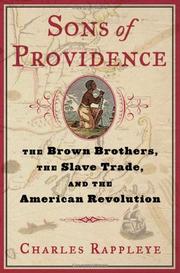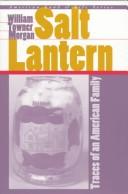| Listing 1 - 5 of 5 |
Sort by
|
Book
Year: 1880 Publisher: Boston [Cambridge priv. print. Riverside Press]
Abstract | Keywords | Export | Availability | Bookmark
 Loading...
Loading...Choose an application
- Reference Manager
- EndNote
- RefWorks (Direct export to RefWorks)

ISBN: 0743266870 Year: 2006 Publisher: New York [etc.] Simon & Schuster
Abstract | Keywords | Export | Availability | Bookmark
 Loading...
Loading...Choose an application
- Reference Manager
- EndNote
- RefWorks (Direct export to RefWorks)
Brown, Moses --- Brown, John --- Brown Family
Book
ISBN: 1451661223 Year: 2012 Publisher: New York : Gallery Books,
Abstract | Keywords | Export | Availability | Bookmark
 Loading...
Loading...Choose an application
- Reference Manager
- EndNote
- RefWorks (Direct export to RefWorks)
The uncensored, New York Times bestselling memoir by the polygamist stars of the hit show Sister Wives , Kody and his four wives openly discuss what it's like living in a plural marriage. A SINGULAR STORY OF PLURAL MARRIAGE Since TLC first launched its popular reality program Sister Wives, Kody Brown, his four wives—Meri, Janelle, Christine, and Robyn—and their seventeen children have become one of the most famous families in the country. Now, with the candor and frankness that have drawn millions to their show, they reveal exactly how their special relationship works—the love and faith that drew them together, the pluses and pitfalls of having sister wives, and the practical and emotional complications of a lifestyle viewed by many with distrust, prejudice, even fear. How do the four relationships differ? What effect does a polygamous upbringing have on their children? What are the challenges—emotional, social, or financial—involved in living this lifestyle? Is it possible for all four sister wives to feel special when sharing a husband? How has being on camera changed their lives? And what is it like to add a new wife to the family—or to be that new wife? Filled with humor, warmth, surprising insights, and remarkable honesty, theirs is a love story at heart, unconventional but immediately recognizable in the daily moments of trust, acceptance, forgiveness, passion, and commitment that go into making one big, happy, extraordinary family.

ISBN: 1587291592 9781587291593 0877456135 0877456143 9780877456131 9780877456148 Year: 1997 Publisher: Iowa : University of Iowa Press,
Abstract | Keywords | Export | Availability | Bookmark
 Loading...
Loading...Choose an application
- Reference Manager
- EndNote
- RefWorks (Direct export to RefWorks)
As a child growing up in Pipestone, Minnesota, in the 1930s, William Morgan marveled over his great-grandmother's salt-filled chimney lantern. Full of sea salt and mementos and drawings that commemorated her British home and her journey to America in 1855, this Victorian artifact became the inspiration both for Morgan's pilgrimage to find the original salt lantern and, after many journeys both external and internal, for this multifaceted family history.Morgan began his research by visiting England and Scotland, then traveled to Vermont, Wisconsin, Minnesota, Iowa, and Nort
Brown family. --- Holliday family. --- Morgan family. --- Morgan, William Towner -- Family. --- Stanard family. --- Morgan, William Towner --- Family. --- Pipestone County (Minn.) --- Goodhue County (Minn.) --- North Dakota --- Biography. --- Goodhue Co., Minn. --- Pipestone Co., Minn.
Book
ISBN: 0801469449 9780801469442 9780801451614 0801451612 1322523061 Year: 2013 Publisher: Ithaca
Abstract | Keywords | Export | Availability | Bookmark
 Loading...
Loading...Choose an application
- Reference Manager
- EndNote
- RefWorks (Direct export to RefWorks)
John Brown was fiercely committed to the militant abolitionist cause, a crusade that culminated in Brown's raid on the Federal armory at Harpers Ferry in 1859 and his subsequent execution. Less well known is his devotion to his family, and they to him. Two of Brown's sons were killed at Harpers Ferry, but the commitment of his wife and daughters often goes unacknowledged. In The Tie That Bound Us, Bonnie Laughlin-Schultz reveals for the first time the depth of the Brown women's involvement in his cause and their crucial roles in preserving and transforming his legacy after his death. As detailed by Laughlin-Schultz, Brown's second wife Mary Ann Day Brown and his daughters Ruth Brown Thompson, Annie Brown Adams, Sarah Brown, and Ellen Brown Fablinger were in many ways the most ordinary of women, contending with chronic poverty and lives that were quite typical for poor, rural nineteenth-century women. However, they also lived extraordinary lives, crossing paths with such figures as Frederick Douglass and Lydia Maria Child and embracing an abolitionist moral code that sanctioned antislavery violence in place of the more typical female world of petitioning and pamphleteering. In the aftermath of John Brown's raid at Harpers Ferry, the women of his family experienced a particular kind of celebrity among abolitionists and the American public. In their roles as what daughter Annie called "relics" of Brown's raid, they tested the limits of American memory of the Civil War, especially the war's most radical aim: securing racial equality. Because of their longevity (Annie, the last of Brown's daughters, died in 1926) and their position as symbols of the most radical form of abolitionist agitation, the story of the Brown women illuminates the changing nature of how Americans remembered Brown's raid, radical antislavery, and the causes and consequences of the Civil War.
Women --- Antislavery movements --- Women abolitionists --- Abolitionists --- Women social reformers --- Human females --- Wimmin --- Woman --- Womon --- Womyn --- Females --- Human beings --- Femininity --- Political activity --- History --- Brown family. --- Brown, John, --- Relations with women. --- Family. --- Braun, Dzhon, --- Old Brown, --- Fighting Brown, --- Ossawatomie Brown,
| Listing 1 - 5 of 5 |
Sort by
|

 Search
Search Feedback
Feedback About UniCat
About UniCat  Help
Help News
News